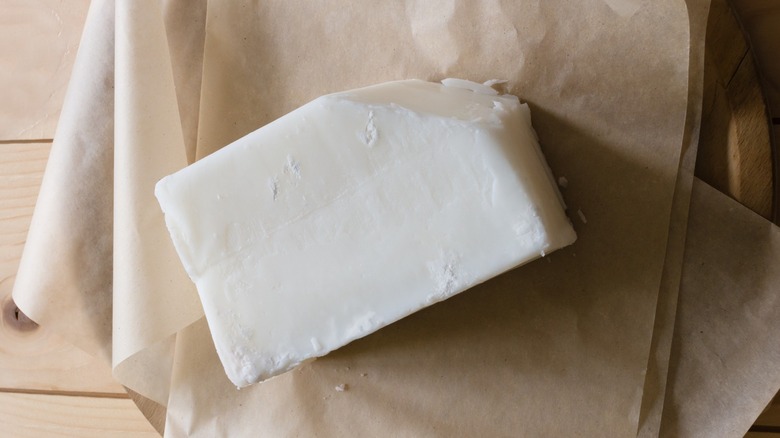The Key Step You Should Never Skip When Making Beef Tallow
Beef tallow is a natural cooking fat that's rich in umami flavor and perfect for frying. It also provides an awesome savory substitute for shortening or lard. While you can buy it, making this rendered animal fat at home is simple. But there's one step you should never skip with homemade beef tallow: Straining it before cooking with it.
According to celebrity chef David Burke who was at this year's US Open as part of Flavors of the Open, presented by DOBEL, beef tallow "should definitely be strained because there could be veins or sinew attached to the suet." This is because beef tallow is made by slowly cooking down the hard white internal fat in cuts of beef at a very low temperature until they melt. During this process some of the sinewy meat stuck to the fatty beef trimmings can catch on the pan, even with regular stirring, turning them into brown bits of crackling. Separating these unwanted crispy bits out of the rendered fat is vital because it prevents the fat from spoiling at a faster rate.
Straining beef tallow through a fine mesh sieve, before it cools to room temperature and solidifies, catches any crackling or sinewy bits, leaving you with an additive-free cooking fat that lasts for up to a year in the fridge. An additional strain through a piece of cheesecloth or a coffee filter with finer holes will guarantee that your tallow (also known as beef dripping) is completely free from impurities and perfectly smooth.
Cooking with beef tallow
Decant your beef tallow into a clean jar after straining it and allow it to cool fully. At this point it should set into a firm waxy texture, much like coconut oil, and should have a mild aroma. Then you can employ this savory, meaty-flavored fat in the same way as you'd use butter or oil to saute veggies, sear steak, or fry eggs. You can even use tallow in pastry to make flavorful chicken pot pies, simply by substituting the regular fat with your homemade beef dripping. The tallow will lend your pastry a deep, savory flavor and encourage a flaky, buttery texture.
One of the best things about cooking with beef tallow is that it has a higher smoke point than other varieties of animal-based cooking fats, such as lard, duck fat, and schmaltz. This means you can use it to deep fry foods like battered fish or french fries without worrying about it burning or turning acrid and making your dishes taste unpalatable. Straining the fat before use ensures that there aren't any sneaky sinewy bits or veins suspended in the tallow. These could burn at high temperatures and overpower the delicate flavor of ingredients like the mild cod fillets featured in a classic British fish and chips recipe.

